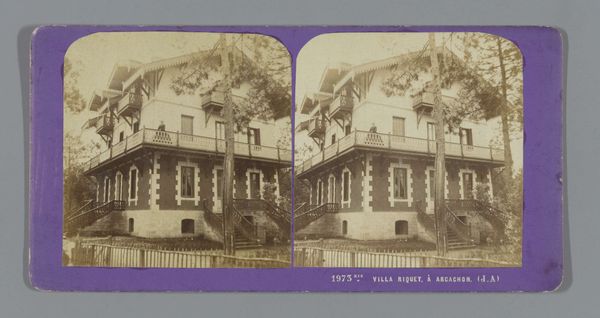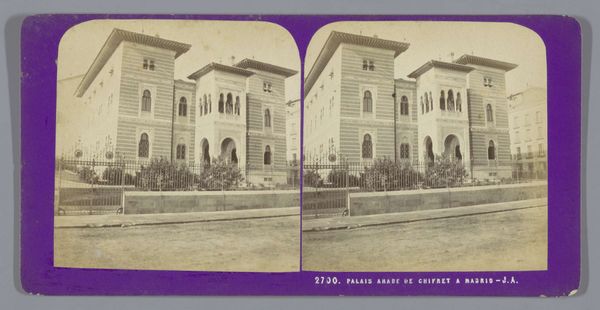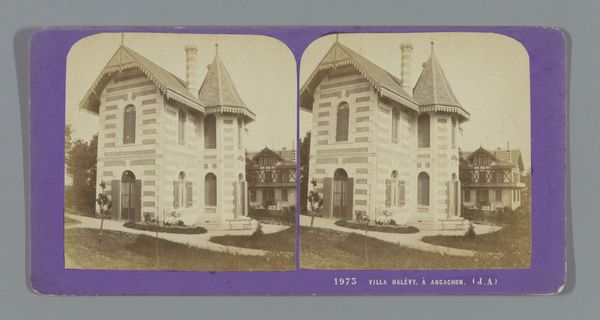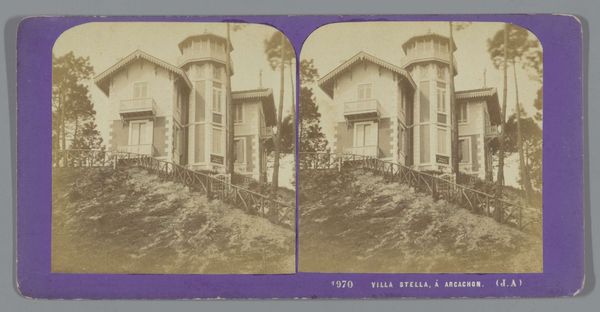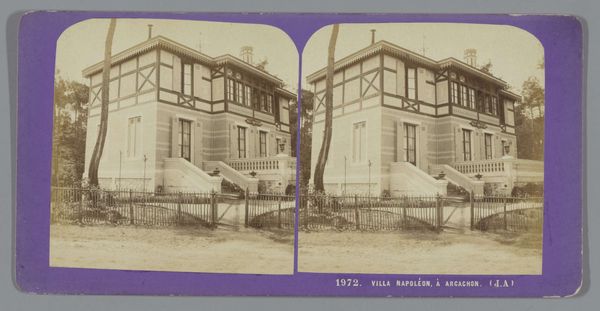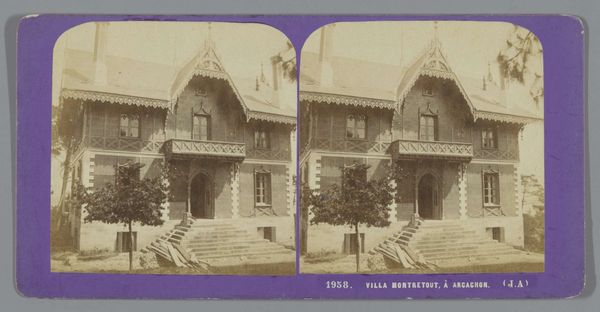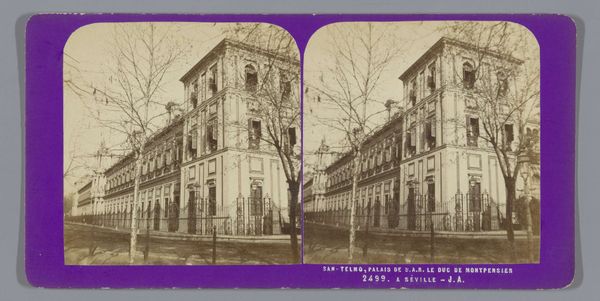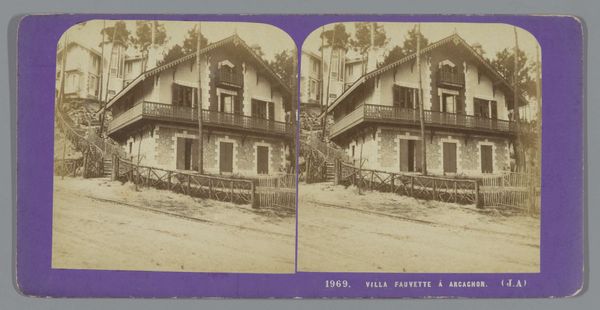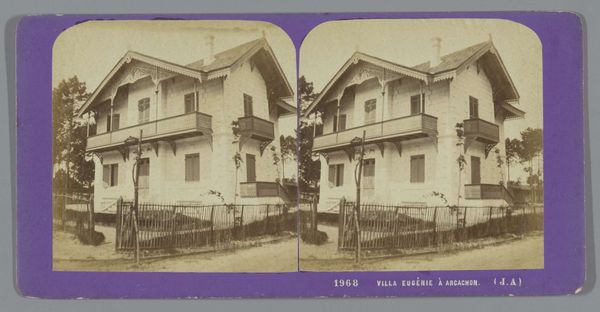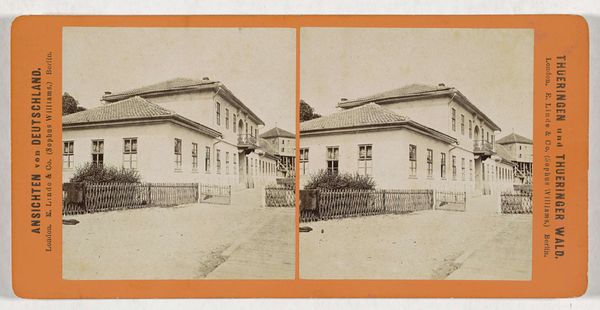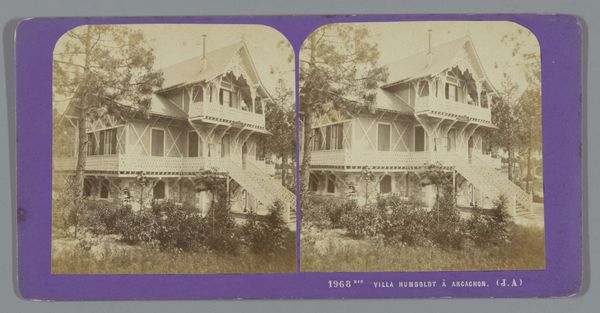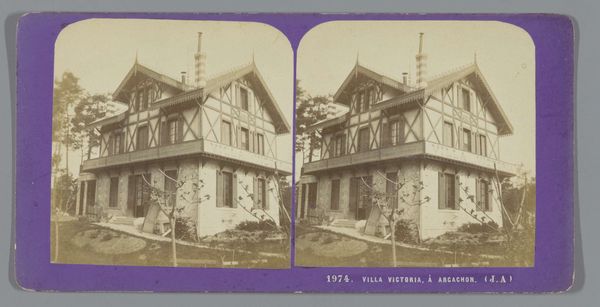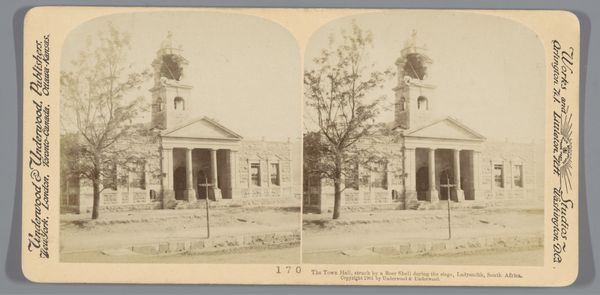
Dimensions: height 85 mm, width 170 mm
Copyright: Rijks Museum: Open Domain
Editor: Here we have Jean Andrieu's "Exterieur van de Villa Moulin Rouge te Arcachon," dating from sometime between 1862 and 1876. It's an albumen print photograph, and something about the light and shadow creates an eerie feel despite being an outdoor scene of a building. What do you see in this piece? Curator: Well, for me, the key here is the albumen print itself. This process, invented only a few decades before this photograph, fundamentally altered the way images were made and distributed. Think about the labour involved: preparing the glass plate, coating it with light-sensitive emulsion, the careful timing of exposure. Editor: So, it's not just the *image* of the house that's important? Curator: Exactly! The material conditions of its creation are paramount. Look at the details – the slight imperfections, the tonal range. These speak to the specific chemicals, the skill of the photographer in the darkroom, the environmental factors at play. It moves us away from thinking about photography solely as a tool for capturing reality and emphasizes its constructed nature. This would be radically different from contemporary digital photos that are infinitely reproducible and often stripped of materiality. The industrial revolution plays a role! Editor: It's amazing how much the materials themselves tell us. How do we place the Villa in time? Curator: I am intrigued by this Romantic-era building’s purpose, considering the social context and who lived there. Early photographs of architecture document rising classes' obsession with idealizing wealth during La Belle Époque. As more images like these were produced, photography became an object of consumption with impacts on labour that continue to today. Editor: That connection between materials and larger social structures is fascinating. This photograph is much more than just a snapshot; it's a record of labour, industry, and shifting social values. Thank you! Curator: It just proves that looking closely at materiality provides a lens to examine broader shifts. Thank you!
Comments
No comments
Be the first to comment and join the conversation on the ultimate creative platform.
